Figures & data
Figure 1. (a). Study area location: Mackenzie basin highlighted by dashed box. (b). Mackenzie basin: present-day ice is mapped in white; LGM ice extent is mapped in light grey. (c). 1 m hillshaded bathymetry of Lake Tekapo (from Mountjoy et al. Citation2019), overlain on a 1 m hillshaded DEM (from Land Information New Zealand; LINZ). The logged outcrop is highlighted by a black box and labelled. The palaeo-lake level at the LGM (Sutherland et al. Citation2019a, Citation2019b) is shown by the white contour (726 m a.s.l). Major fault lines are mapped in red (from New Zealand Active Faults Database; NZAFD).
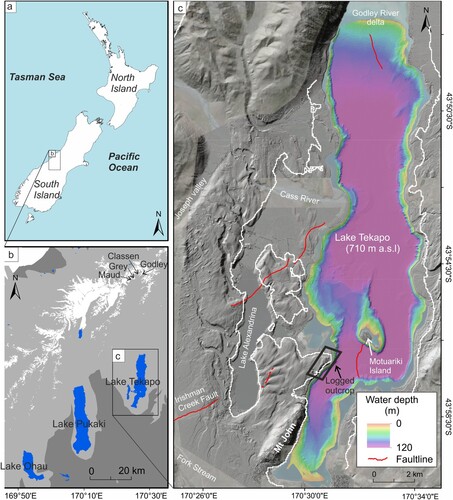
Figure 2. (a). The southwestern shoreline of Lake Tekapo, viewed from the eastern lakeshore, showing the location of the outcrop in panel b and the bedrock contact in panel d. (b). Extent of the logged outcrop, as viewed from the eastern lakeshore. Note that the surface of the cliff is relatively flat-lying, and the top of the outcrop is cut through a palaeo-lake level at 726 m a.s.l. (Sutherland et al. Citation2019a, Citation2019b) (c). Contextual photograph to show the vertical scale of the outcrop, viewed from the south. Circle and arrow in the box in panel b indicates the position of the photographer and view direction respectively in panel c. (d). Contact between bedrock and pale silts, location relative to logged exposure shown in panel a.
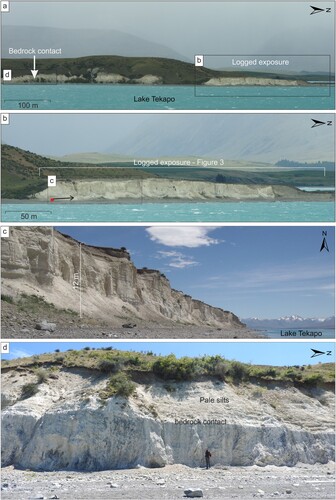
Figure 3. Scaled section sketch of the northern half of the stratigraphic outcrop on the west shoreline of Lake Tekapo, showing main lithofacies and their architectural characteristics. The white area at the base of the section is obscured by talus. Boxed areas are the locations of detailed studies of lithofacies and structures depicted in annotated photographs in . Readers are directed to the high-resolution online version of this figure for detail.
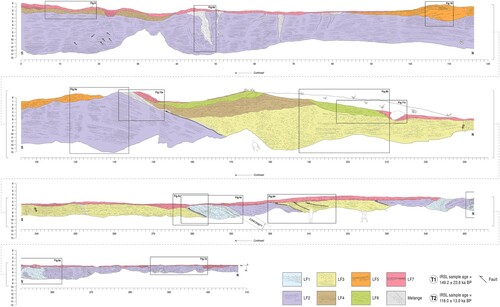
Table 1. Descriptive information and depositional interpretation.
Figure 4. Characteristics of LF 1: (a) tilted bedding of well- to poorly-sorted and matrix-supported to clast-supported coarse gravels. Note that gravel packages are separated by discontinuous lenses/beds of laminated silty-sand and silt, displaying soft sediment deformation structures; (b) Stratigraphical and structural interpretation of panel a, location labelled on . (c) shear zone/fault contact within LF 1 (outlined and descending from left to right) where upper stratified gravels have been amalgamated with underlying matrix-supported gravels. (d) Clast form for LF 1 collected from area marked by red circle in a.
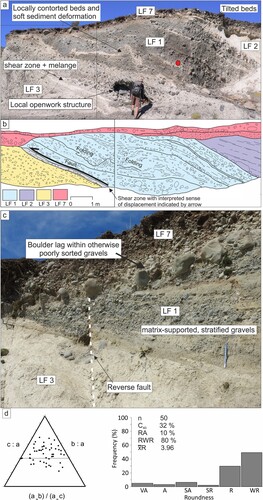
Figure 5. Characteristics of LF 2: (a) coarse and fine grained rhythmite cosets forming repeating couplets and showing strongly developed internal horizontal stratification or lamination (scraper blade = 15 cm long); MS notation = melt season, N-MS notation = non-melt season (b) thin and discontinuous horizontal laminae of coarse sandy silt, displaying rip up clasts and starved ripples, and capped by rapidly fining laminae; (c) lonestone cluster; (d) lonestone (e) rhythmic cycles forming couplets throughout LF 2 and showing the change from thin bedding at the base to the thickest bedding at the top of the sequence. Note the lonestone on the right-hand side of exposure; (f) Stratigraphical and structural interpretation of panel d, location labelled on . (g) Heavily faulted and fractured rhythmites (h) Reverse fault with lonestone, note pencil for scale (i) Load and flame soft sediment deformation in sand and silts, note pencil for scale (j) Convoluted and highly contorted sands and silts
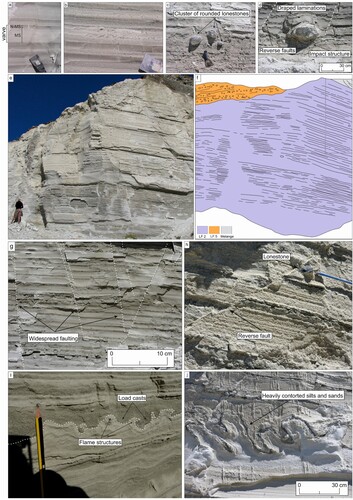
Figure 6. Clastic dykes developed in LF 2: (a) complex of upward-tapering form displaying anabranching gravel-filled necks that isolate blocks of LF 2 host material and end in numerous tapering offshoots and isolated elongate gravel pods or stringers; (b) Stratigraphical and structural interpretation of panel a, location labelled in ; (c & d) downward-tapering forms, showing also multiple vertical cracks that parallel the wedge sides; (e & f) examples of the bases of downward-tapering wedges, including finer poorly-sorted gravels (d) and finely-laminated rhythmites that parallel the dyke walls (e).
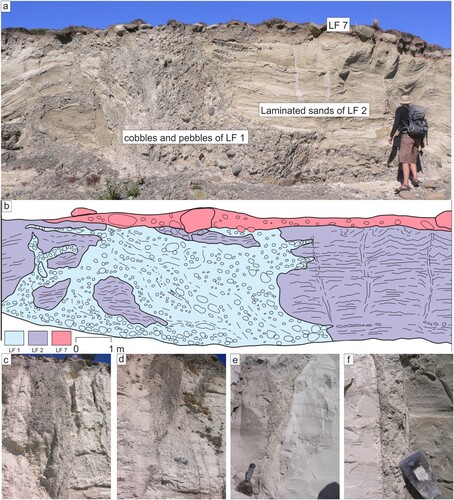
Figure 7. (a) Highly contorted bedding (tight polyclinal folding) displayed in upper LF 2 at the northernmost end of the outcrop. (b) Stratigraphical and structural interpretation of panel a, location labelled in (c) clastic dyke developed along a fault in LF 2, probable hydrofracture (d) close up of probable hydrofracture (e) clastic dyke developed between faults in LF 3
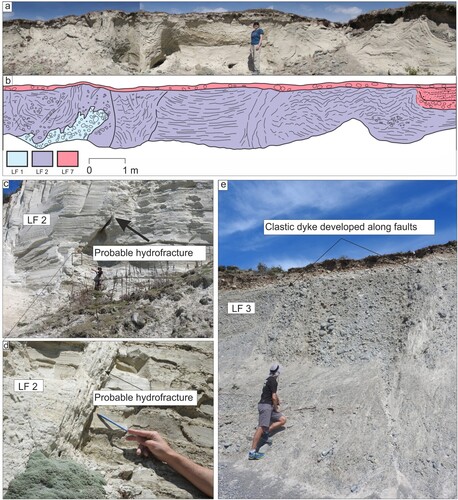
Figure 8. Characteristics of LF 3: (a) packages of massive to crudely horizontally bedded sheets of poorly sorted gravel, separated by discontinuous, lensate bodies of cross-bedded sands; (b) Stratigraphical and structural interpretation of panel a, location labelled on ; (c) tilted bedding with large concentrations of cross-bedded sands, in thrust fault contact with underlying LF 2 and containing a shallow internal thrust fault dipping northwards; (d) Stratigraphical and structural interpretation of panel c, location labelled on ; (e) Clast form data from LF 3 sampled from the area marked by the red circle in c.
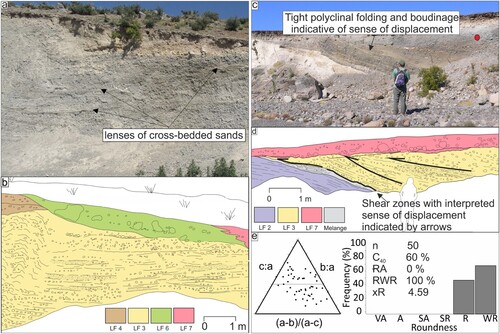
Figure 9. Characteristics of LF 4: (a) outcrop details showing interbedded stratified and locally clast-supported diamictons and matrix-supported gravels, here lying unconformably over LF 2; (b) Stratigraphical and structural interpretation of panel a, location labelled on ; (c) Clast form data from LF 4.

Figure 10. (a) Gravel clinoforms of LF 5 dipping at 20° from right to left and lying unconformably on LF 2 rhythmites and interdigitating vertically with planar bedded gravelly sand and sandy pebble gravel. (b) Stratigraphical and structural interpretation of panel a, location labelled on .
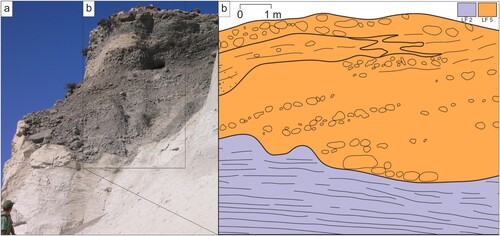
Figure 11. Characteristics of LFs 6 and 7: (a) Stratigraphic overview of LF 6, which is located immediately below the ground surface in this view (indicated above white dashed line) and comprises a massive matrix-supported diamicton (Dmm) overlying LF 3; (b) Nature of the contact between LF 3 and LF 6; (c) Stratigraphical and structural interpretation of panel a, location labelled on .
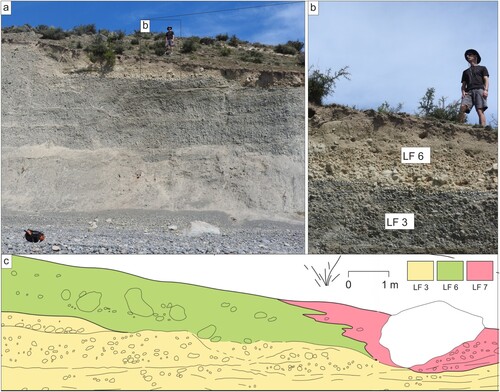
Figure 12. (a) Boulder to cobble gravel of LF 7 and its relationship to LFs 2 and 5; (b) Clast form data from LF 7.
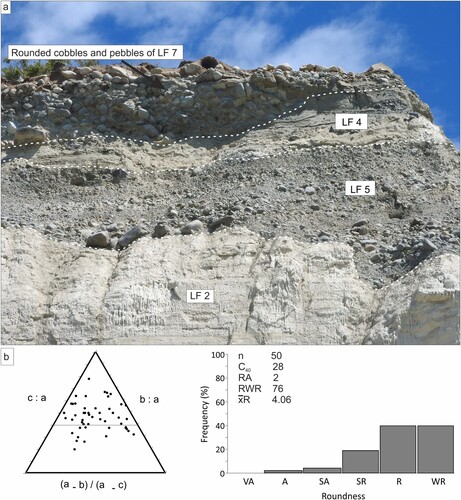
Figure 13. Co-variance graph for RA and C40 value incorporating modern samples from Fox Glacier, collected by Brook and Lukas (Citation2012) and palaeo-data from formerly glaciated sites at the West Coast and Lake Pukaki (Evans et al. Citation2010, Citation2013). The C40 values appear unusually slabby compared to other glaciogenic sediments in New Zealand (e.g. Benn and Ballantyne Citation1994; Evans et al. Citation2010, Citation2013a, Citation2013b; Brook and Lukas, Citation2012; Lukas et al. Citation2013). The RWR values also appear elevated and the samples have exceedingly high roundness, indicating very rounded slabs.
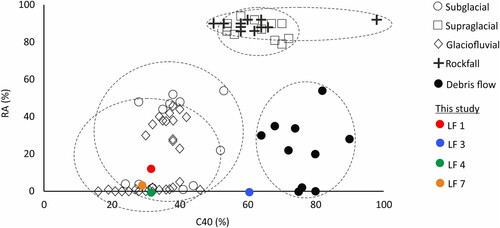
Table 2. Water contents and radionuclide contents.
Figure 14. Conceptual model to illustrate event stratigraphy. (HCF in legend = hyper-concentrated flow, SGF = sediment gravity flow).
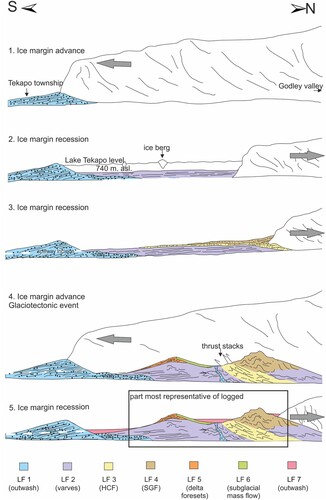
Table 3. Measured a-value and equivalent dose, total dose rate and luminescence age.
